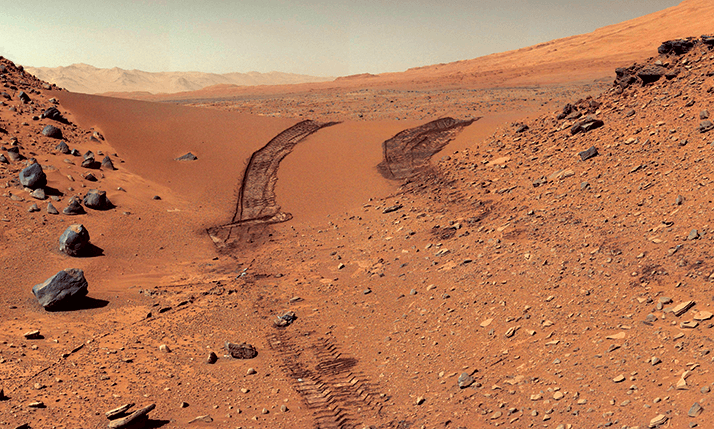
Unmanned probes have indicated that liquid water could have existed on the red planet, and that means there could have been life too. Are fossilized remains waiting to be found? Of course, accurately detecting ancient biology is not easy, particularly on an alien planet. Nevertheless, Alison Olcott Marshall and Craig Marshall from the University of Kansas believe that Raman spectroscopy and GC-MS should be used together to help develop conclusive evidence of extraterrestrial life. We spoke with Olcott Marshall to discover the true challenges of analyzing alien rocks.
Both Craig and I had worked on the problems of detecting and defining life in the Precambrian – the three billion or so years when most of the life on Earth was microscopic and hard to fossilize. Thus, if we want to understand what is happening in the biosphere – or to explore connections between the biosphere and geosphere for over three quarters of Earth’s history – it is crucial to delineate the chemical signals that life left in the rock record. Many of the challenges and approaches used in the Precambrian are also relevant to astrobiological exploration, so it was a natural segue to apply our lessons to future exploration of other planets.
I think the biggest challenge is that we do not have an analytical definition for life, at least life in its simplest form. There is no universally agreed upon collection of chemical evidence that adds up to “life detected”.
We see Raman spectroscopy as an ideal screening tool for GC-MS analysis. Preserved biosynthetic compounds identified by GC-MS can be an excellent sign of life, but the data can be hard to collect; it is a destructive technique, but there is no way of knowing until the end of the process whether the sample is going to contain any extractable compounds of use. Additionally, GC-MS is limited on a Martian rover by its need for sample preparation – a process that consumes materials; the Curiosity rover has GC-MS capability, but there are only nine sample cups dedicated to looking for polar organic compounds; you have to make those nine samples count! In contrast, Raman spectroscopy is a fast, non-destructive technique that can be done from a distance. However, the resulting data cannot offer definitive proof of life. Our hope is that combining the two techniques will increase the chances for success. We are also investigating how geological context can be used to influence sample selection. For instance, are there morphological signals that can indicate that a rock would be worth the very arduous process of chemical analysis on Mars?
That’s potentially a big issue. No matter how many Earth-based Mars analogs we examine, Mars is still alien. It has different geological and atmospheric history, and the trace element compositions are very different. It’s possible that elements that do not typically interfere with analytical processes on Earth will lead to complications on Mars.
We are continuing the process of thinking through potential complications and work arounds, with the hope that when the next sets of rovers deploy, we as a community have a good chance of collecting reliable data. ESA has a rover scheduled for 2018 and NASA in 2020 – both will have Raman spectrometers on board if all goes to plan.
I believe data will be collected over the next few years that will be interpreted by some as a sign of life, but I cannot see the issue being resolved in my lifetime. We do not yet even have consensus about the oldest signs of life here on Earth, and those are rocks that anyone can examine in their own labs...
Ironically, we prefer “Golden Years” to “Life on Mars”. When things are going well we tend to break out in a chorus or two. Even our girls now know to chime in on the “bomp-bomp-bomp” part.




